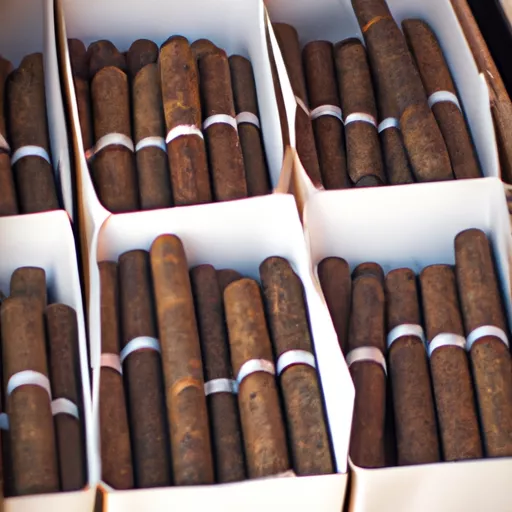
As a cigar enthusiast, I have always been fascinated by the world of tobacco. From smoking my first full-sized cigar to exploring different flavors and blends, I have always been on the lookout for new and interesting smoke experiences. Recently, I stumbled upon something that caught my attention – little cigars.
At first, I was a bit skeptical about trying them out. After all, how different could they be from regular cigars? But upon further research and experimentation, I have found that little cigars are a unique and exciting addition to the world of cigars. In this article, I will share with you everything I have learned about little cigars, from their history and composition to their flavors and popularity.
Let’s start with the basics – what exactly are little cigars? Little cigars, also known as cigarillos, are smaller versions of traditional cigars. They typically measure around 3-4 inches in length and have a thinner ring gauge, making them quick and convenient smoke options. Little cigars are often machine made and contain a blend of different tobacco leaves, such as flue-cured, air-cured, and burley. They are also sometimes flavored with various additives, such as fruit extracts or sweeteners, to enhance the smoking experience.
Little cigars have been around for centuries, with some records dating back to the 17th century. They were first introduced in Europe as a cheaper alternative to full-sized cigars and were initially made from leftover tobacco leaves. However, it wasn’t until the 19th century when little cigars became popular in the United States, thanks to a German immigrant named Phillip Morris. Morris opened his first tobacco company, which specialized in little cigars, and by the 1960s, they had become a staple in the American smoking culture.
One of the main differences between little cigars and traditional cigars is their composition. While traditional cigars are made entirely of whole tobacco leaves, little cigars often use chopped or shredded tobacco scraps as fillers. This is why little cigars are often more affordable than traditional cigars, but it also affects their flavor and smoking experience. Little cigars are generally milder and have a quicker burn time compared to traditional cigars.
Another factor that sets little cigars apart is their flavors. As mentioned earlier, little cigars are often infused with various flavors, making them a popular choice among smokers who prefer a more delicate and sweet smoke. Flavors range from traditional tobacco blends, such as vanilla or cherry, to more unconventional ones, like chocolate or coffee. These added flavors make little cigars a favorite among beginners or occasional smokers who may find full-sized cigars too strong for their taste.
Like traditional cigars, little cigars also come in different shapes and sizes. The most common ones are the cigarillo, which is a straight and narrow stick, and the cheroot, which is a short and thick cigar. However, unlike traditional cigars, little cigars can also come in flavored and colored wraps, giving them a more playful and eye-catching appearance. It’s not uncommon to see little cigars with wrappers that resemble candy or fruit flavors, making them stand out among other tobacco products.
In terms of popularity, little cigars have become a significant player in the cigar industry, especially in the United States. According to the National Association of Convenience Stores, little cigars make up about 6% of the total cigar market share. In recent years, their popularity has only grown, thanks to the increasing demand for alternative smoking options and the rise of flavored tobacco products. Moreover, the convenience and affordability that little cigars offer have made them a top choice among young adults and college students.
But like any tobacco product, little cigars also come with their own set of controversies. One of the main concerns surrounding little cigars is their potential appeal to minors. With their bright and colorful packaging and sweet flavors, little cigars may be mistaken for candy, making them attractive to young individuals. The tobacco industry has been under scrutiny for targeting a younger demographic with flavored little cigars, and some states have even banned them altogether to combat underage smoking.
In terms of health risks, little cigars are often perceived as a safer alternative to traditional cigars. However, this is not entirely accurate. While little cigars may be smaller and milder compared to traditional cigars, they still pose similar health risks. Like any other tobacco product, little cigars contain chemicals and toxins that can be harmful to the body, such as nicotine, tar, and carbon monoxide. Even though they may seem less intimidating, the fact remains that little cigars are still tobacco products and should be consumed responsibly.
In conclusion, little cigars are a unique and intriguing addition to the world of cigars. They offer a convenient and affordable smoke option for those looking for a quick and milder tobacco experience. With their exciting flavors and playful appearance, they have gained a loyal following among young adults and college students. However, it’s essential to remember that, like any other tobacco product, little cigars come with their own set of controversies and health risks. As such, they should be consumed responsibly and in moderation. So, the next time you’re looking for a quick smoke, don’t overlook these little gems – they might surprise you.